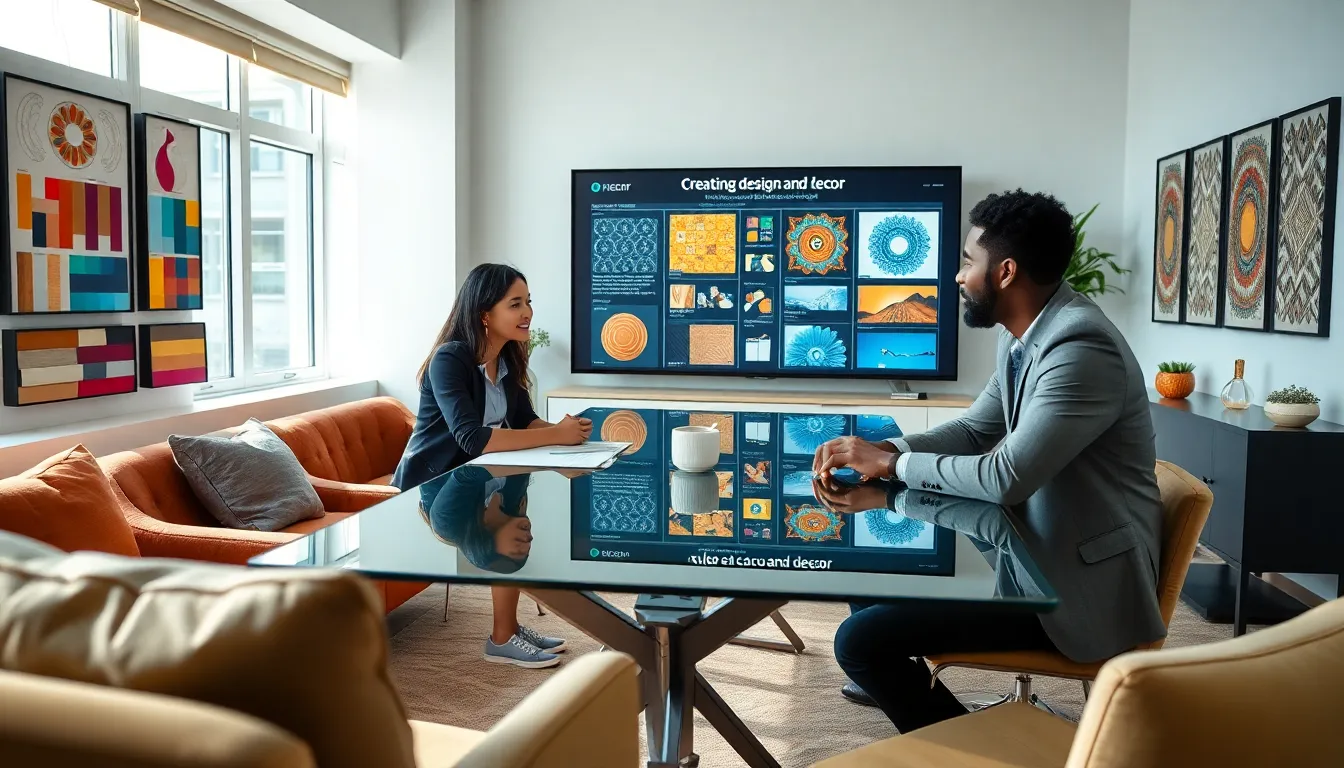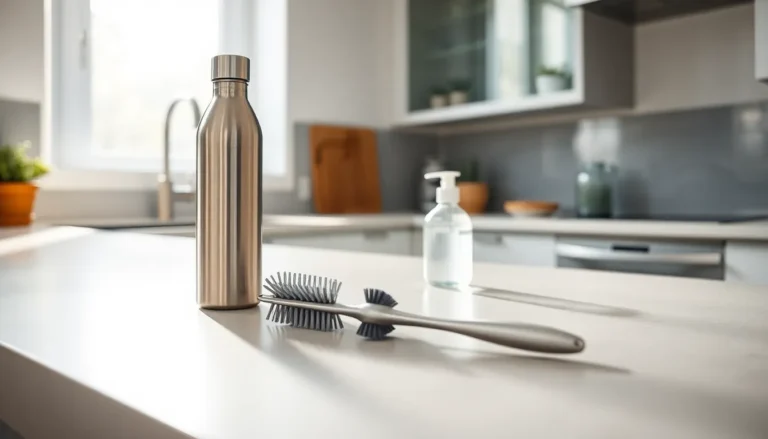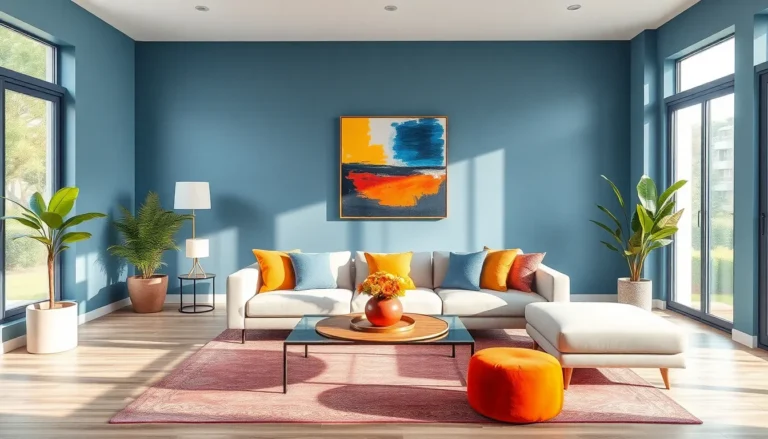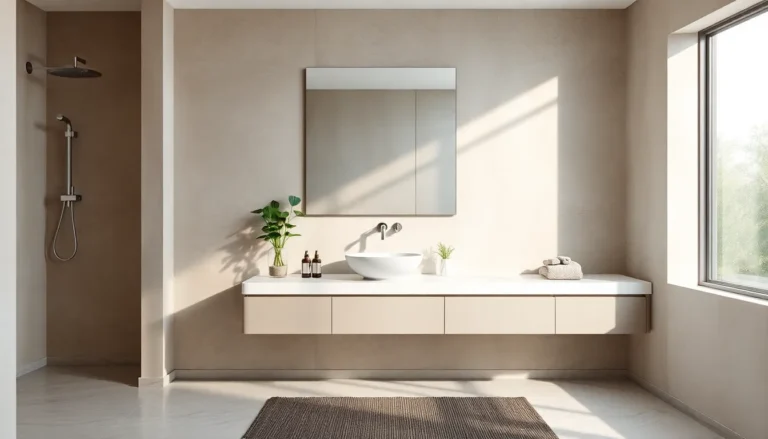Table of Contents
ToggleEver looked around your space and thought, “I can do better than this mess?” Well, buckle up because creating design and decor is like cooking a gourmet meal: it just takes the right ingredients and a dash of creativity. From the basic rules of design to choosing colors that make your friends say “Wow.”, let’s jump into the world where function meets fabulousness and you reign as the design dictator of your domain. Who knew creating a stylish space could be both simple and seriously fun?
Understanding the Basics of Design

Elements of Design
Every great design starts with understanding the essential elements that create a strong foundation. These elements include space, line, shape, color, texture, and pattern. Space refers to the area around and between objects. Lines guide the eye, think of them as the framework of your design. Shapes are two-dimensional while forms are three-dimensional, and both add structure to your design. Color sets the mood, texture adds depth, and patterns bring excitement and interest to any room.
Principles of Design
Equally important are the principles of design: balance, contrast, emphasis, movement, pattern, rhythm, and unity. Balance is all about distributing visual weight. You can achieve this asymmetrically or symmetrically: it all depends on the vibe you’re going for. Contrast creates visual interest by placing opposing elements next to each other, while emphasis allows you to highlight a particular feature, making it the star of the show. Movement guides the viewer’s eye around the space, ensuring every area gets its moment in the spotlight. Then, we have rhythm, which is all about creating a flow, and unity, which ties everything together, making your design feel cohesive.
Understanding these basics is your first step in mastering design.
Tips for Selecting Your Design Style
Popular Design Styles Explained
Choosing a design style can be overwhelming, with so many appealing options out there. It helps to recognize a few popular styles. For instance, modern design emphasizes clean lines and minimalism, perfect for those who believe less is more. On the flip side, if you’re drawn to cozy, vintage vibes, you might appreciate a rustic or farmhouse style. Then there’s industrial design, showcasing raw materials and a bit of an edgy vibe. Meanwhile, boho embraces eclectic patterns and colors, creating a relaxed, free-spirited atmosphere. Whatever vibe resonates with you, understanding these styles is key to selecting your own.
Personalizing Your Space
Personalizing your space turns a house into a home. Think about what inspires you. Family photos, travel souvenirs, or even your favorite books can reflect your personality. Don’t shy away from making bold choices: whether it’s a funky piece of furniture or an oversized artwork, let each element tell a story. Eventually, it’s about creating a space where you feel comfortable and inspired.
Choosing Color Schemes
The Psychology of Colors
Colors are a powerful aspect of design. What you choose can influence mood and atmosphere. For instance, blues and greens evoke a sense of calm and relaxation, fitting for bedrooms or serene spaces. Conversely, reds and yellows generate energy and excitement, making them suitable for lively areas like dining rooms or kitchens. Knowing how colors affect emotions will help you curate the perfect palette for your space.
Color Combinations That Work
Picking the right combinations can feel like an art form. A classic pairing like gray and yellow can offer both sophistication and cheer, while earthy tones like olive green and terracotta bring warmth and depth. Don’t be afraid to experiment. Using a color wheel can help in identifying complementary colors or triadic schemes that add vibrancy to your design. Remember, the key is balance, ensure one color doesn’t overpower the others.
Incorporating Decor Elements
Furniture Selection and Arrangement
The selection and arrangement of furniture can make or break your design. Consider functionality, make sure each piece serves a purpose while contributing to the overall look. For smaller spaces, consider multi-functional furniture, ensuring style doesn’t take a back seat. When arranging, think about flow: furniture should help easy movement throughout the space and foster conversation. A well-placed couch can invite social interaction, while an awkward layout can disrupt the vibe.
Accessorizing Your Space
Accessories are like the icing on the cake. They infuse personality into your design. Think about cushions, rugs, art, and decorative items. Don’t overload: instead, focus on pieces that resonate with you. Use a mix of heights, textures, and colors to keep things dynamic. Finally, vary shapes with round coffee tables or angular lamps for added interest and to avoid monotony.
Creating a Cohesive Look
Balancing Functionality and Aesthetics
Creating a cohesive look requires balancing functionality with aesthetics. Every item should serve a purpose, whether it’s providing comfort or enhancing visual interest. Avoid clutter, excess items can distract from your overall design. Keep surfaces somewhat clear while showcasing a few treasured pieces that complete your vision.
Maintaining Flexibility in Decor
Don’t hesitate to adjust your decor over time. As tastes change, so can your design without a complete overhaul. Invest in versatile pieces that can transition as your style evolves. Utilizing removable wallpaper or easily swap out cushions and artwork can refresh your space without very costly.







